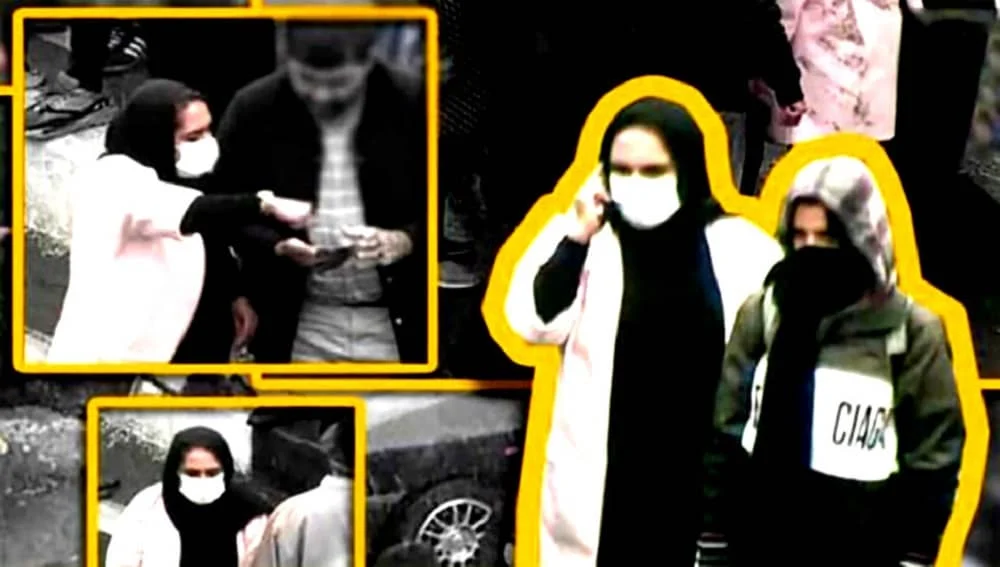
The nationwide protests, which erupted in response to decades of marginalization in political, social, and economic spheres, marked a significant turning point in Iran’s history.
The involvement of women in these uprisings was notably different from past protests. As opposed to being mere participants, women actively engaged in organizing and leading the demonstrations. The Fars News Agency, an outlet associated with the Islamic Revolutionary Guard Corps (IRGC), released CCTV footage from November 2019, showing women directing protesters in various locations around Tehran. The agency’s statement noted, “The vibrant presence of women has been a significant factor in stirring the emotions, sentiments, and societal zeal.”
Javan, another IRGC-affiliated newspaper, went further, acknowledging the inspiration women drew from the People’s Mojahedin of Iran (PMOI/MEK). It reported, “The manner in which women participated closely resembled the tactics employed by the Mujahedin organization.”
MUST-WATCH: Excerpt from @Maryam_Rajavi landmark speech at London's Earls Court, June 21, 1996. "Today's oppressed women are the victors of tomorrow. Their voices will echo forever." So true! pic.twitter.com/sNdH4fSbSB #IranRevoIution2022
— Ali Safavi (@amsafavi) November 28, 2022
The bravery of these women was evident in their willingness to face danger head-on. Abdolreza Rahmani Fazli, then Minister of Interior, described how women operated in small groups, often taking on roles that incited and invited others to join the protests. However, their courage came at a heavy price. Throughout the November 2019 uprising, dozens, if not hundreds, of women lost their lives, becoming martyrs for their cause.
The cities of Tehran, Karaj, Tabriz, Baharestan, Ahvaz, and others witnessed this remarkable sacrifice. Ahvaz, in particular, stood out with 14 martyrs, including Masoumeh Darabpour and Maryam Eydani, underlining the extent of women’s participation even in regions where they face severe deprivation and restrictions.
Despite the brutal crackdown by the regime, which claimed over 1,500 lives, the spirit of resistance continued to burn bright. Women and girls, having endured lifelong oppression under the clerical regime, emerged as leaders and pioneers of this resistance. Their actions firmly contradicted the regime’s belief that the nation had forgotten its roots and the sacrifices of those who had previously stood against tyranny.
Why did Khomeini use the torture chambers known as residential units against women prisoners? Why were they imprisoned in cages and coffins?
Because women’s resistance had repeatedly defeated their torturers. #1988Massacre #ProsecuteRaisiNow https://t.co/Idokwszjnu pic.twitter.com/Yr9FNWy1YI— Maryam Rajavi (@Maryam_Rajavi) October 31, 2021
This movement did not go unnoticed by the regime. The events of the uprisings, particularly the prominent role of women, must have echoed a prediction made by Iranian opposition President-elect Maryam Rajavi of the National Council of Resistance of Iran (NCRI), back in 1996. She had forewarned the regime, stating, “You have done your utmost to humiliate, suppress, torture, and slaughter Iranian women, but rest assured that you would receive the blow from the very force you discounted.”
Today, as Iran grapples with ongoing internal challenges, the legacy of these brave women continues to inspire and shape the course of the country’s quest for freedom and equality.

MEK Iran (follow us on Twitter and Facebook), Maryam Rajavi’s on her site, Twitter & Facebook, NCRI (Twitter & Facebook), and People’s Mojahedin Organization of Iran – MEK IRAN – YouTu







